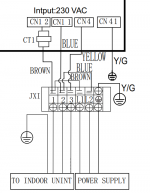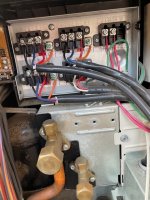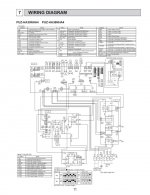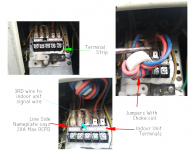It still breaks my brain on most small branch circuits ocp is 240.4(D), unless it's hvac or other things than you can do 310.16. Guess the #14 UF package told them only to do a 25ft line set max (shrug...).
I'm curious if the manufacturers could be convinced to add small additional loads to the #14 tray cable such as a larger condensate pump without it jeopardizing a warranty. I'm guessing not.. but wondering what the best strategy would be if I decided to go this way. Seems like the fuse protecting the tray cable is manufacturer specific and not sized in a similar fashion between sizes of mini splits...





